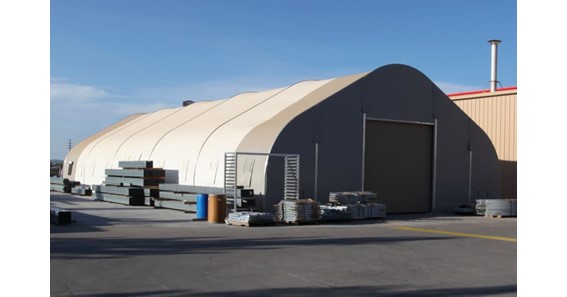The Arctic region, known for its harsh and unforgiving climate, poses unique challenges for aviation infrastructure. In this frigid expanse of ice and snow, the need for reliable and robust aircraft storage is paramount. Steel hangars have emerged as indispensable solutions in these extreme environments, providing shelter and resilience in the face of Arctic conditions. In this article, you will find out the challenges of the Arctic’s harsh climate on aviation infrastructure, and why steel airplane hangars are the ultimate solution for these extreme conditions.
Arctic Challenges
Unforgiving Climate
Sub-zero temperatures, heavy snowfall, and biting winds characterize the Arctic’s harsh climate. These conditions can take a toll on aircraft stationed in the region. Conventional hangars, often made of materials that are not well-suited to extreme cold, can struggle to protect aircraft from these harsh elements. Ice and snow buildup on hangar roofs can cause structural damage if improperly managed.
Permafrost and Foundation Stability
The presence of permafrost in the Arctic adds another layer of complexity to construction projects. Permafrost is frozen ground that can shift and thaw, potentially causing instability in the foundations of structures like aircraft hangars. Ensuring the structural integrity of a hangar in such conditions requires specialized engineering solutions.
Steel’s Arctic Resilience
Durability in Extreme Cold
One of the key advantages of steel is its exceptional durability in cold temperatures. Unlike some other construction materials, steel remains strong and resilient even in sub-zero conditions. It does not become brittle, ensuring that steel hangars can continue to provide a reliable shelter for aircraft in the extreme cold of the Arctic.
Adaptability to Permafrost
Steel hangars can be designed with specialized foundation systems to address the challenges posed by permafrost. For example, helical pile foundations can be used to anchor the hangar securely to the ground. These foundations are designed to accommodate the shifting and thawing of permafrost, ensuring the stability and longevity of the structure.
Insulation and Energy Efficiency
Effective Insulation
Maintaining a controlled environment within the hangar is crucial for Arctic aviation operations. Steel hangars can be equipped with advanced insulation systems that effectively prevent heat loss. These insulation systems help maintain the required temperature for aircraft maintenance and operations, even in the face of extreme cold outside.
Sustainable Energy Solutions
To further enhance their sustainability and self-sufficiency, steel hangars in the Arctic can incorporate renewable energy sources like solar panels. These additions reduce the hangar’s environmental impact and ensure a reliable energy supply in remote Arctic locations where access to conventional power sources may be limited.
Low Maintenance and Longevity
Minimal Maintenance Requirements
One of the significant advantages of using steel in extreme environments is its low maintenance requirements. Steel is naturally resistant to corrosion, rust, and degradation, reducing the need for frequent upkeep. This characteristic is particularly advantageous in remote Arctic locations where access to maintenance resources may be limited and costly.
Longevity and Cost Efficiency
The longevity of steel hangars translates into cost efficiency over the long term. These constructions can endure over time without experiencing the same extent of deterioration as those built from less resilient materials. This means that once a steel hangar is constructed, it can reliably serve its purpose for many years without frequent repairs or replacements, making it a cost-effective choice for Arctic aviation infrastructure.
Environmental Considerations
In addition to its practical advantages, using steel hangars in the Arctic also aligns with environmental considerations. Steel is highly recyclable, making it an eco-friendly choice for construction projects. This aligns with the growing emphasis on sustainability in modern infrastructure development. Furthermore, the durability of steel hangars reduces the need for resource-intensive maintenance and repairs, which can have a lower environmental impact over time.
In the unforgiving Arctic environment, steel airplane hangars stand as beacons of resilience and practicality. Their ability to withstand extreme cold, adapt to permafrost conditions, provide effective insulation, and offer low maintenance requirements makes them the preferred choice for aviation infrastructure in this challenging region.
